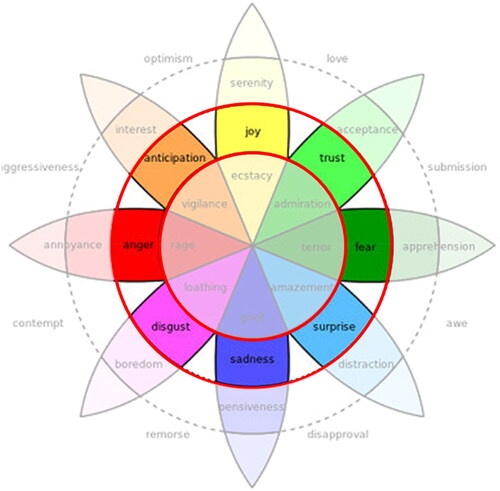Figures & data
Figure 1. Section of the control-value theory according to Schutz and Pekrun (Citation2007), modified by the authors for the purpose of this study. Appraisals (purple) comprise control and value appraisals (pink + blue entailing external/internal attributions and extrinsic/intrinsic values respectively) influence achievement emotions (yellow) which, in turn, influence the achievement activity, represented by participating in FFF (orange).

Figure 2. Wheel of emotions by Plutchik (Citation2001), adapted by the authors for the purpose of the study. The arrangement in a circle allows depicting similar emotions near to each other whereas opposite emotions are 180° apart. Eight sectors indicate the primary emotions (red ring).

Figure 3. Results based on the applied concepts of control-value-theory and wheel of emotions. Quantitative results from control and value appraisals and emotions are summarized (captures of tables) and represented by significant values. Qualitative results are represented by relative values (in the tables and in the ring). Results are based on quantitative (A, B) and qualitative questions (a-d) (see A1 FFF_questionnaire).

